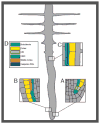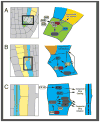Uncovering Gene Regulatory Networks Controlling Plant Cell Differentiation
- PMID: 28647055
- PMCID: PMC5522350
- DOI: 10.1016/j.tig.2017.05.002
Uncovering Gene Regulatory Networks Controlling Plant Cell Differentiation
Abstract
The development of multicellular organisms relies on the precise regulation of cellular differentiation. As such, there has been significant effort invested to understand the process through which an immature cell undergoes differentiation. In this review, we highlight key discoveries and advances that have contributed to our understanding of the transcriptional networks underlying Arabidopsis root endodermal differentiation. To conclude, we propose perspectives on how advances in molecular biology, microscopy, and nucleotide sequencing will provide the tools to test the biological significance of these gene regulatory networks (GRN).
Keywords: Arabidopsis root; cell differentiation; endodermis.
Copyright © 2017 Elsevier Ltd. All rights reserved.
Figures


References
-
- Geldner N. The endodermis. Annu Rev Plant Biol. 2013;64:531–558. - PubMed
-
- Horvitz HR, Herskowitz I. Mechanisms of asymmetric cell division: two Bs or not two Bs, that is the question. Cell. 1992;68:237–255. - PubMed
-
- Dolan L, et al. Cellular organisation of the Arabidopsis thaliana root. Development. 1993;119:71–84. - PubMed
Publication types
MeSH terms
Grants and funding
LinkOut - more resources
Full Text Sources
Other Literature Sources
Research Materials
Miscellaneous

